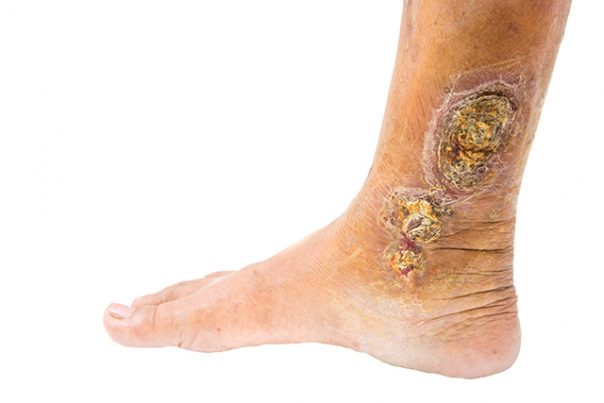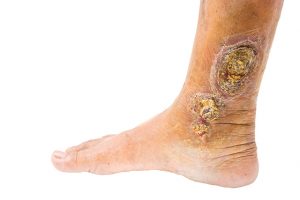
Pyoderma gangrenosum – causes, side effects and treatments at NaturalPedia.com
Tuesday, July 31, 2018 by Michelle Simmons
http://www.naturalpedia.com/pyoderma-gangrenosum-causes-side-effects-and-treatments-at-naturalpedia-com.html

Pyoderma gangrenosum is a rare skin condition that is characterized by large and painful ulcers or sores on the skin, typically on the legs. Although the exact cause of this disease is not fully understood, experts suggest that it occurs due to a dysfunction of the immune system. People with other medical conditions, such as irritable bowel syndrome (IBS) and rheumatoid arthritis, are at a higher risk for developing pyoderma gangrenosum. The condition is also commonly associated with inflammatory conditions, such as Crohn’s disease and ulcerative colitis.

Known side effects of pyoderma gangrenosum
The main side effect of pyoderma gangrenosum is a large painful ulcer that may be deep-seated. It is commonly seen on the lower leg, especially on the shin of the tibia bone. Ulcers may also be seen in the trunk, head, and neck area. Initially, it develops as a small red bump that may look like an insect bite. After several days, the small lesion can grow into a large ulcer. The edges of ulcers appear purple. Pyoderma gangrenosum can lead to other complications, such as pain, wound odor, fatigue, scarring of healed lesions, secondary infections, and involvement of other organs.
Body systems harmed by pyoderma gangrenosum
The body system mainly damaged by pyoderma gangrenosum is the integumentary system as it affects the skin.
List of foods or nutrients that prevent pyoderma gangrenosum
There is no information on what foods or nutrients specifically prevent pyoderma gangrenosum. However, some foods can help prevent ulcers in general. These include honey, cruciferous vegetables such as broccoli, brussels sprouts, cauliflower, and kale, cabbage, yogurt, kefir, plantain, fruits, vegetables, whole grains, and other foods rich in fiber.
Treatments, management plans for pyoderma gangrenosum
Natural therapies for pyoderma gangrenosum include calendula and honey. Homeopathic medicine calendula can be applied twice or thrice daily. Application of honey is also recommended for treating ulcers.
Where to learn more
- Pycnogenol shows astonishing 89 percent cure rate on diabetic leg ulcers, with zero side effects
- Avocado Seeds- Superfoods For Your Health
- Six signs of zinc deficiency: Are YOU getting enough?
- Pine tree bark extract reduces diabetic leg ulcers (press release)
- New study shows best leg ulcer treatment is natural and includes laughter (really!)
Summary
Pyoderma gangrenosum is a rare but serious skin condition.
Pyoderma gangrenosum causes large and painful ulcers or sores on the skin, typically on the legs.
Pyoderma gangrenosum also causes ulcers in the trunk, head, and neck area.
Pyoderma gangrenosum initially grows as a small red bump that may look like an insect bite, then develops into a large purple-colored ulcer.
Pyoderma gangrenosum can lead to other complications, such as pain, wound odor, fatigue, scarring of healed lesions, secondary infections, and involvement of other organs.
Foods that can help prevent ulcers, in general, include honey, cruciferous vegetables such as broccoli, brussels sprouts, cauliflower, and kale, cabbage, yogurt, kefir, plantain, fruits, vegetables, whole grains, and other foods rich in fiber.
Pyoderma gangrenosum can be treated naturally by applying calendula or honey.
Sources include:
Tagged Under: Tags: Pyoderma gangrenosum





